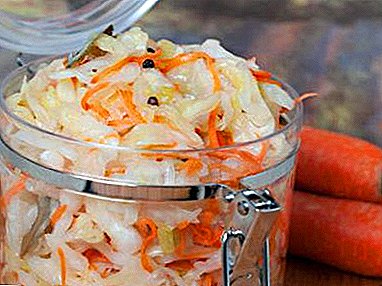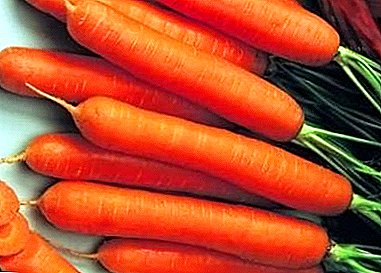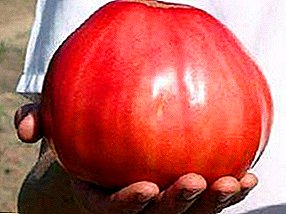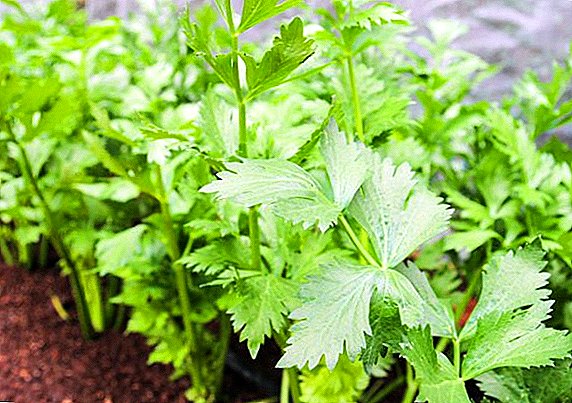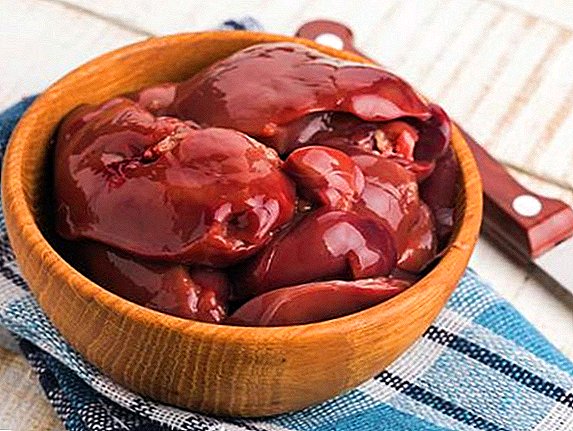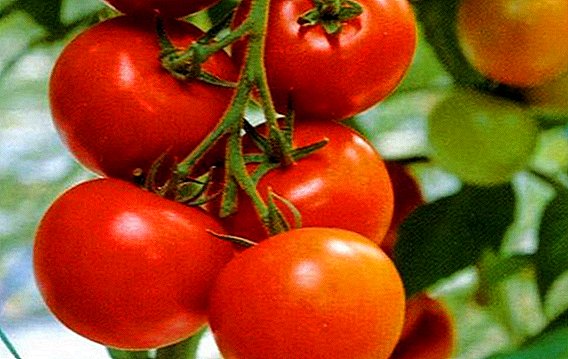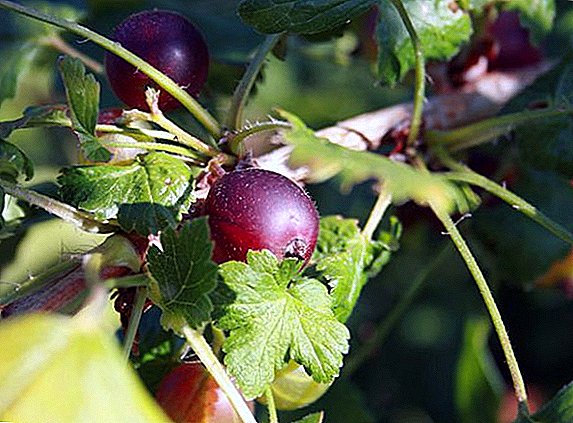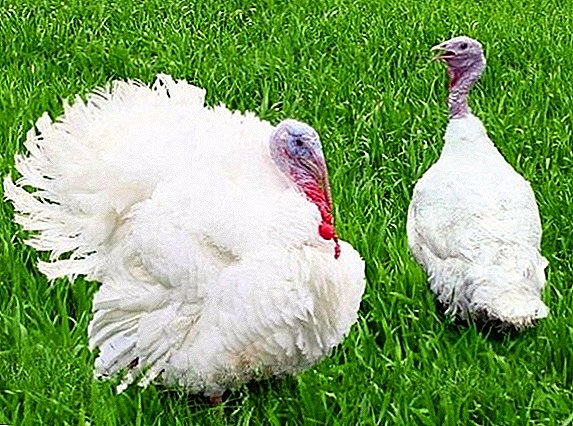 Growing broiler turkeys is widespread among poultry farmers. Rapid weight gain, unpretentiousness, the ability to reproduce at home, gentle dietary meat with excellent taste - all this looks an undoubted advantage. However, before you take up this business, you need to take into account its features and problems that may arise.
Growing broiler turkeys is widespread among poultry farmers. Rapid weight gain, unpretentiousness, the ability to reproduce at home, gentle dietary meat with excellent taste - all this looks an undoubted advantage. However, before you take up this business, you need to take into account its features and problems that may arise.
Broiler turkey
This breed was bred as a result of hybrid crossing. This type of poultry has a ponderous strong body, a strong and powerful beak with an red appendage. The wings are fully developed, with their help, the turkey can fly over a three-meter-high fence, and thanks to its strong legs it can run at a speed of 50 km / h.
The advantages of growing these birds include the following:
- Ecological purity of homemade meat.
- Dietary meat - an abundance of valuable trace elements and vitamins in it and, at the same time, an extremely small amount of fat.
- Great nutritional value and good taste of turkey eggs.
- When breeding for sale - quick payback: the higher price of meat due to the fact that it is considered rare.
- Wasteless breeding and sales. In fact, everything can be sold: chicks of all ages, feathers, down, meat, eggs.
 But the minuses of cultivation are:
But the minuses of cultivation are:- The need for special conditions for the maintenance of young poultry.
- High probability of mortality.
- More tangible costs when equipping the yard - a big bird requires more space.
- Separate keeping of young birds away from other poultry due to the great fearfulness of young poults and possible diseases.
- More feed and the need to control its quality.
- Because of the tendency of turkeys to obesity, an increased amount of greenery is required in their diet.
- Late sexual development - usually by nine months.
Did you know? Turkeys are the largest domestic birds from the order of chickens. More than them only ostriches.

Breed "heavyweights"
The "heavyweights" include turkeys, quickly gaining slaughter weight:
- in 16 weeks - from 18 kg;
- for 28 weeks - the maximum weight of 26 kg.
Wide-breasted white
This breed was bred in the last century in North America. The body is covered with bright white feathers, the "bow" of black feathers is clearly visible on the chest. The body is large, oval. Weight can reach 25 kg. Unpretentious, well suited for growing in cells.
Rush from nine months. The laying of eggs takes several months; during the laying, about a hundred eggs are laid, 90% of them are fertilized. For food - picky, feeding they need only high quality, with the obligatory valuable additives. 
Moscow Bronze
Bred in the middle of the last century by crossing local bronze turkeys with bronze wide chest. Masonry - about 90 eggs, of which over 90% are fertilized. Males fatten weight up to 12 kg, females - up to 7 kg. 
Highbreed converter
Turkeys of this breed were bred in Canada. Their advantages: attractive appearance, excellent quality and high level of precocity of meat. They have wide breasts and white plumage. Agile and muscular. Small head, powerful beak with bright red growth-earring.
Running speed - 45 km / h, take-off height - 2 meters. By the fifth month, males weigh 19-22 kg, females - from 9 to 12 kg. Laying - for three months, 50 eggs, the female incubates them for about four weeks. 
BIG-6
The breed was bred in England in 2007. It is characterized by high reproducibility and great meat precocity. Dead time reaches 3 months. The weight of the male can be up to 30 kg. Usually the male weighs from 15 to 17 kg, the female - 6-7 kg. Egg fertility is about 80%.
We advise you to learn more about the features of keeping and breeding broiler turkeys of wide-chested white and Big 6 breeds.

BJT-8
They are distinguished by a convex body, strong legs, red with a "beard" beak and arched neck. Feathers - completely white. By 18 weeks of age, males have a live weight of 15 kg. During the day, the live weight increases by 110 g. The adult male has a live weight from 28 to 30 kg, the female - 14 kg. 
Familiarize yourself with the process of breeding turkey poults using an incubator, the table for incubating turkey eggs, a list of current turkey crosses, and find out how much turkey and adult turkey weigh, how to achieve high productivity of turkeys.
Necessary conditions for keeping broiler turkeys
By the end of the first month after the birth, the young are transferred to the bison. There are two types of turkey content: cellular and free. We will consider the option of content in the room.
Important! Chicks and adult turkeys should always have access to clean drinking water.
Room Requirements
The room (cage) for grown turkeys must be selected or equipped according to the calculation: no more than two broilers per square meter. The temperature should not fall below 20 ° C. Light day should be 12-13 hours or more. If necessary, daylight hours can be extended with additional lighting lamps. 
How should be equipped turkey
Its arrangement should meet the following basic requirements:
- Reliability of construction, preventing the penetration of any animals, especially snakes and all sorts of rodents.
- Zoning turkey - it will not allow disorientation in birds, and also prevent collisions between males and thereby save livestock.
The main areas should be:
- Plot feeding. It is equipped with containers for different types of feed - loose, dry, wet. The container size is at least a quarter of a meter per individual. Drinking bowls can be placed in different places or in a line, the flow of clean water - constantly. The floor is covered with a litter capable of absorbing moisture that needs to be changed or laid fresh on top, this is done to avoid the spread of infections.

- Roosting They are made of thick, with rounded ends, crossmembers. Usually equipped, starting from 70-80 cm from the floor surface in the form of gradually rising ledges, located in a semicircle or circle. Calculating the number of perches - 45 turkeys on one. Arranged in the most shady place without any lighting. Below is a deep bedding or tray, periodically cleaned.

- Walking It is located between the sleeping place and feeding place. It will not be superfluous to decompose a heap of limestone around the perimeter, as well as chalk, to equip ash baths. In this place during inclement weather the greatest activity of turkeys will occur.
- Nests Installed in a quiet and not through the corner. Four to five females equipped with one place. Made in the form of a house with a pitched roof, always with a hole a little higher than the level of the nest and the size of the turkey. Smooth straw is used as bedding.

- Sections for broilers of different ages. For the first time, the young or the most aggressive males are placed there.
Important! Sawdust and shavings are strictly prohibited to be used as bedding when keeping turkeysbroilers - they can take these materials for food.
Paddock
The mode of walking in the fresh air is very useful for broiler turkeys. However, due to the peculiarities of these birds, the place for their presence in the air should be appropriately equipped:
- The site should be spacious (the more - the better).
- High (not less than three meters) fencing.
- Canopy As protection from the sun and rain, with a low fence - a barrier when trying to escape a bird.
- It is desirable that the land was planted with grass grasses (single or perennial) - this will enrich the turkey diet with proteins and fresh greens.
- During the warm season, the equipment requires feeding troughs, and necessarily drinkers.
Video: turkey paddock
How to feed broiler turkeys at home
Feeding is an extremely important issue, because, first of all, the set of live weight by birds depends on it. In young and adult individuals, the diet is somewhat different. Consider this.
Youngsters
Its feeding begins no later than 20 hours from the moment of birth. It should be noted that the closeness and long anxiety of young stock due to starvation are unacceptable. During the first week, it is fed nine times a day. In the second - five or six times.
From the third seven-day feeding, they produce three to four times. Starting with the fourth, the young growth is transferred to the feeding mode of adult birds. Feed the chicks with specialized feed in recommended doses, or self-prepared mixtures. The following is the daily diet (in grams):
| Feed component | 1-5 day | 6-21 days | 22-28 day |
| Hard boiled egg | 0,7-0,8 | 8-9,3 | - |
| Powdered milk | - | 2-2,3 | 2,4-2, 5 |
| Corn | 5 | 9 | 38 |
| Millet | 4 | 8 | 25 |
| Vegetable meal | 3 | 7 | 22 |
| Fish flour | - | - | 4 |
| Meat and bone meal | - | - | 3 |
| a piece of chalk | - | 0,7 | 2 |
| Vitamins | 0,1 | 0,3 | 1 |
| Fresh greens | 5 (juice of herbs) | 5 (juice of herbs) | 15 |

You will probably be interested to know how to distinguish a turkey from turkeys, what turkeys are sick with and how to treat them, as well as what features of turkey breeding exist.It is also very important to gradually add new foods to the ration while simultaneously adding quantities daily.
The grain in the diet of chicks should be crushed:
- first week - grains of 1.5-2 mm;
- second or third week - 3 mm;
- then - whole grain pills (5 mm and more).
Dry and wet food laid out on different feeders. An important feature is that wet food should not stick to hands. Moisturizing of the feed can be done with plant sap, yogurt or whey.
Important! The abundance of greenery in young animals is contraindicated - such food can quickly clog the intestines of the chick.

Adult bird
Adult turkeys feed 3-4 times a day. The diet should contain a mixture of high quality with a large percentage of protein, the required amount of carbohydrates and a reduced content of fluorine and calcium.
Approximate daily ration for broiler turkey (in grams per one):
| Feed component | 4-8 week | 9-12 week | 13-20 week | 21-26 week |
| Millet | 26,5-28,5 | 55-63 | 84-97 | 90-145 |
| Corn | 28-40 | 60-95 | 100-170 | 130-220 |
| Peas | - | 9-11 | 12-16 | 30-36 |
| Bran | - | 10-14 | 12-14 | 12-16 |
| Vegetable cakes | 23-40 | 33-46 | 20-50 | 17-30 |
| Refuse | 5-8 | 11-16 | 17-25 | 20-30 |
| Yeast | 9-12 | 13-18 | 19-20 | 20-24 |
| Fish flour | 6-11 | 7-11 | 7-9 | - |
| Meat and bone meal | 4-9 | 4-15 | 10-25 | 15-30 |
| a piece of chalk | 2-3 | 6-9 | 10-13 | 12-18 |
| Fat | 1-2 | 5-10 | 10-20 | 5-30 |
| Salt | 0,1 | 1-1,5 | 1,5-2 | 2-3 |
| Vitamins | 1-1,5 | 2-3 | 3,5-5 | 4-6 |
Video: content and breeding turkeys
We recommend that you familiarize yourself with the nuances of keeping such breeds of turkeys as bronze wide chest, Black Tikhoretskaya and Uzbek Palevaya.
Features of breeding broilers
One female can sit approximately 17 chicks in 30 days. After two weeks from the beginning of egg-laying, the selection of eggs is made, - such a period can guarantee a large percentage of eggs fertilization, which, in turn, can ripen either under a female or in an incubator.
There are a number of requirements for the care of small turkey poults, ignoring which can lead to disastrous results.
Did you know? Turkey came to Europe from America - Mayans were actively breeding these birds there. Hence their name. Although at first, due to the fact that the first individuals were delivered by Spanish navigators, they were called Spanish hens.
 Let us dwell on them in more detail:
Let us dwell on them in more detail:- Hatching chicks need constant light, reduced by half an hour every day. Twenty days old chicks need light for 15 hours a day.
- On the eve of the settlement of young stock, it is necessary to carry out a thorough disinfection of the room and feeders with special means.
- Newborn chicks need a room with a temperature of at least 30-32 ° C heat; turkeys with white plumage, due to the reflective properties of the white feather, the temperature is needed higher - 32-34 ° C.
- Due to intolerance turkeys drafts and dampness, you need to grow them in spacious, open at the top boxes, lined with straw.
- Around-the-clock coverage during the first 14 days of turkey poults is necessary
- Chicks can be released on the floor and on the walk only 15 days after their birth.
- They are translated to full content from the 3rd week.

Possible difficulties in growing and disease turkeys
The main difficulty in this case is turkey disease, which can occur with inadequate care, improper feeding, and violation of hygiene rules in the turkey.
The diseased bird becomes lethargic, its movement is rare, insecure, with a wobble, often it hides in a corner. Eyes hollow, feathers ruffled. There are cases when she can not stand on their hands.
The most common ailments of turkeys are:
- Newcastle disease. Extremely dangerous viral ailment, which can affect all livestock. The main symptom is paralysis of the legs. At the first stages of the disease there is diarrhea, feces of gray, greenish or yellow color, with a fetid odor. The only way to save livestock is timely vaccination.
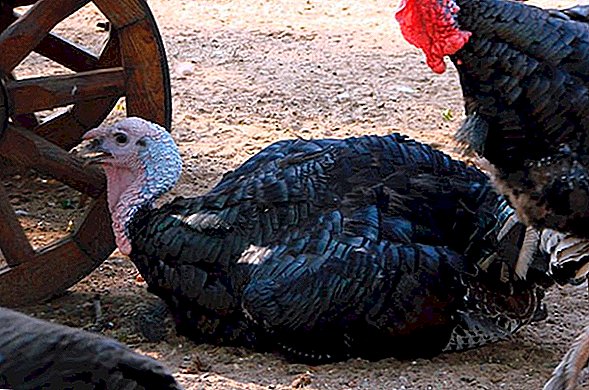
- Sinusitis. The reason - raw bedding, drafts. Symptoms: under the eyes round swelling, wheezing and coughing, discharge from the nose and eyes, bad breath and shortness of breath. If the bird is not treated, it will have poor growth.
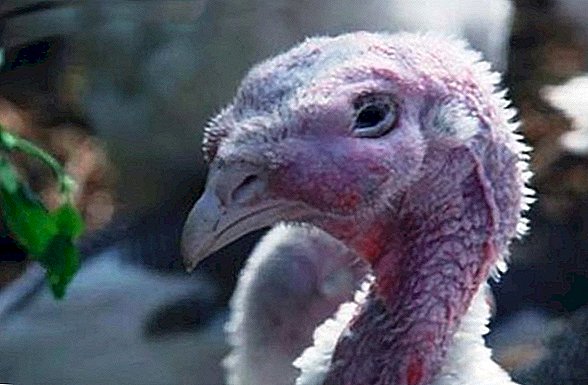
- Pullorosis. Disease chicks up to 14 days. Symptoms: thirst with poor appetite or lack of it. Eyes closed, wings lowered, white or yellow diarrhea. At an early stage, treatment with antibiotics helps; at a later stage, the chicks die because of weakness.
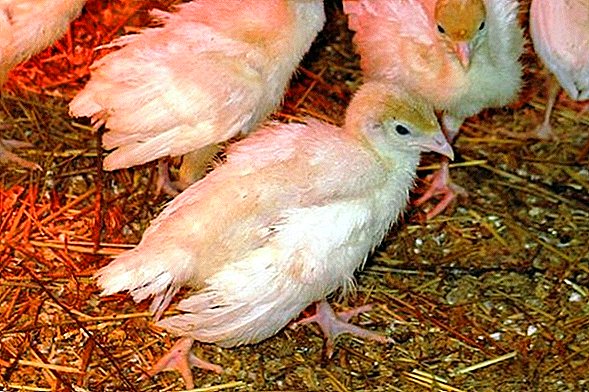
- Gastomoniasis. Infectious disease causes liver damage and inflammation of the stomach. Symptom - fetid green or orange diarrhea. Chicks quickly lose weight, become weak and apathetic. Treatment with "Furazolidone" or "Osarsol".

- Avitaminosis. The reason - the wrong feed. The main category of lesion is young. Poor growth, dull eyes, their tearfulness indicate retinol deficiency. Stopping the growth and softening of the bone is a sign of a lack of calciferol (vitamin D). Paralysis of the legs indicates a deficiency in the B vitamins. For prevention, vitamins should be added to the feed.
It will be useful for you to get acquainted with the nuances of broiler chickens.Video: broiler turkey breeding technology In addition, this species of birds is very susceptible to diseases of the gastrointestinal tract. The main preventive measures are the indispensable vaccination and antibiotics.
As we can see, breeding broiler turkeys is not a very difficult task, especially considering that these birds themselves are very unpretentious in keeping and feeding. Knowing certain rules and following them, as well as gaining experience in the course of work, in a short time you can develop a good and profitable business.
Reviews from the network












